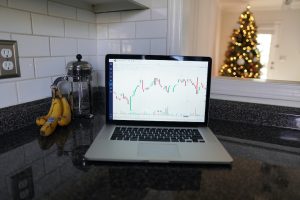When trading forex, it is not uncommon to face losses. However, it is important to know how to hedge a losing forex trade to minimize your losses and protect your capital. Hedging is a risk management strategy that involves taking an opposite position to your original trade. This can help to offset any potential losses and limit your exposure to market volatility.
In this article, we will provide a step-by-step guide on how to hedge a losing forex trade.
Step 1: Identify the losing trade
The first step in hedging a losing forex trade is to identify the trade that is losing money. This can be done by monitoring your open positions and analyzing your trading results. Once you have identified the losing trade, it is important to assess the potential risk and determine the best hedging strategy.
Step 2: Choose a hedging strategy
There are several hedging strategies that you can use to offset your losses in forex trading. Some of the most common strategies include:
– Using a stop loss order: This is a popular strategy that involves setting a stop loss order to limit your potential losses. A stop loss order is an automatic order that is triggered when the market reaches a certain price level. This can help to prevent further losses and protect your capital.
– Taking an opposite position: Another hedging strategy is to take an opposite position to your original trade. This can be done by opening a new trade in the opposite direction to your losing trade. For example, if you have a losing long position, you can open a short position to hedge your losses.
– Using options: Options are financial derivatives that can be used to hedge forex trades. An option gives you the right, but not the obligation, to buy or sell a currency at a predetermined price and time. If you have a losing trade, you can use a put option to sell the currency at a predetermined price, which can help to offset your losses.
Step 3: Implement the hedging strategy
Once you have chosen the hedging strategy that best suits your trading style and risk tolerance, it is time to implement it. This can be done by placing the necessary orders through your trading platform.
If you choose to use a stop loss order, you can set the order at a price level that is below your entry price. This will trigger the order if the market moves against your position, which can help to prevent further losses.
If you choose to take an opposite position, you can open a new trade in the opposite direction to your losing trade. This can help to offset your losses and limit your exposure to market volatility.
If you choose to use options, you can buy a put option to sell the currency at a predetermined price. This can help to offset your losses and protect your capital.
Step 4: Monitor your trades
It is important to monitor your trades closely when hedging a losing forex trade. This can help you to assess the effectiveness of your hedging strategy and make any necessary adjustments.
If your hedging strategy is successful, you may be able to close your losing trade and retain some of your profits from the hedging position. However, if your hedging strategy is not effective, you may need to reassess your risk management approach and consider other hedging strategies.
Conclusion
Hedging is an important risk management strategy that can help to minimize losses in forex trading. By identifying losing trades, choosing the right hedging strategy, implementing it, and monitoring your trades, you can protect your capital and limit your exposure to market volatility. However, it is important to remember that hedging is not a guaranteed strategy and may not always be effective in preventing losses. Therefore, it is important to have a solid risk management plan in place and to always exercise caution when trading forex.






